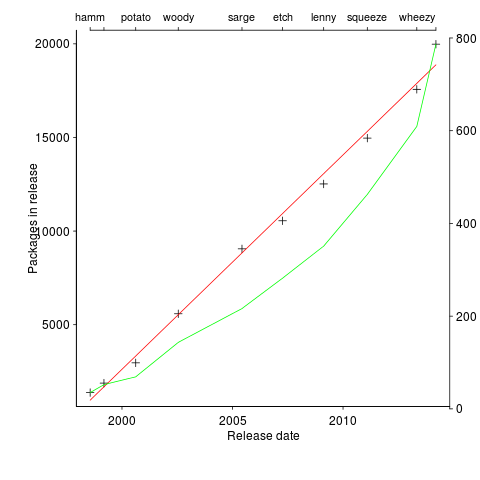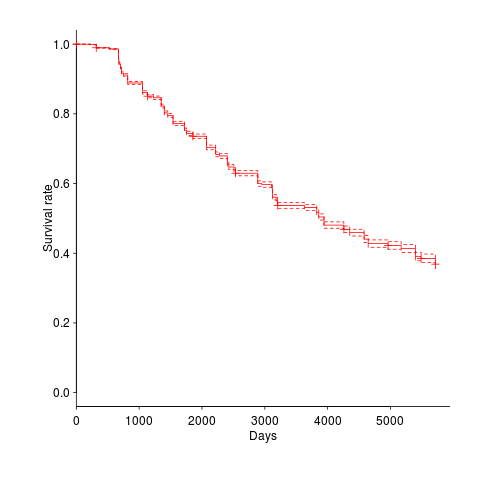Debian has cast iron rules for package growth & death
A plot in a paper on the growth of packages in Debian over the last 15 years caught my eye. The number of packages in growing approximately linear in time (fitted red line) while the total lines of code is each release (green line, axis on right in GigaSLOC) is growing non-linearly (I suspect exponential). The obvious conclusion is that the size of each package is also growing over time; rummaging through the data provided with the paper uncovered an increase in average package size from 25.6 to 39.4 KSLOC (the full dataset is being made available on the 15th of this month).

The straight line fit is excellent, explaining over 99.5% of the variance (code and data). Packages have been constantly added at the rate of 3.3 per day for over 15 years. Is there some rule that says Debian has to grow at 1,000 packages per year?
The numbers in one table showed that packages were being removed in non-trivial quantities. I wondered what the half-life of a package might be and in amongst the data provided by the paper’s authors was a list of packages shipped in each Debian release, just what was needed to create a survival curve. The answer to my package half-life question is around 11 years, as can be seen below (dashed lines are the 95% confidence interval).

Most packages survive for two Debian releases, followed by a 10% cull and then steady decline; the survival curve is slightly concave, meaning younger packages are more likely to be removed (rather than removal being age independent). An 11 year half-life corresponds to an annual removal rate of around 9%. Is this another Debian release rule, around 10% of current packages must be removed for the next release (which means they have to be replaced by an equal number of new packages to keep that steady 3.3 per day overall increase)?
Where is all the code needed to increase the size of existing packages, and create all these new packages, coming from?
Perhaps packages are being replaced by a variant of themselves, created by somebody who has jumped in with lots of ideas (and free time) about where they want to take the application.
If there are 1,000 different kinds of application, then Debian now have 20 implementations of each of them and the next release will have one new implementation for each of them and almost two of each existing implementations will be replaced.
I wonder how much of this code is copy-and-paste, we will have to wait for the release of the full dataset (and some spare time on somebodies part).
Recent Comments